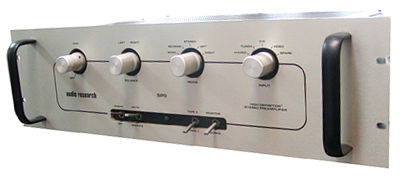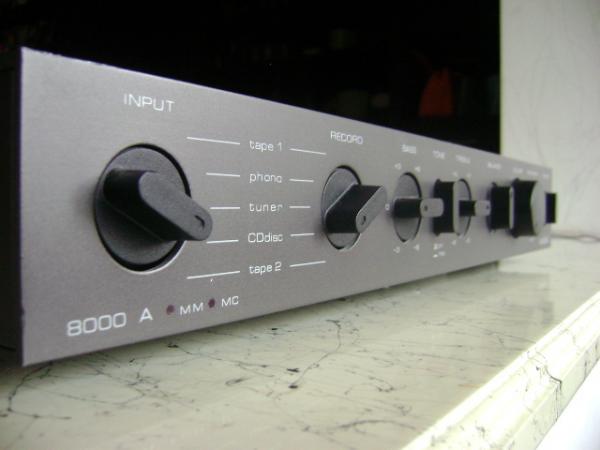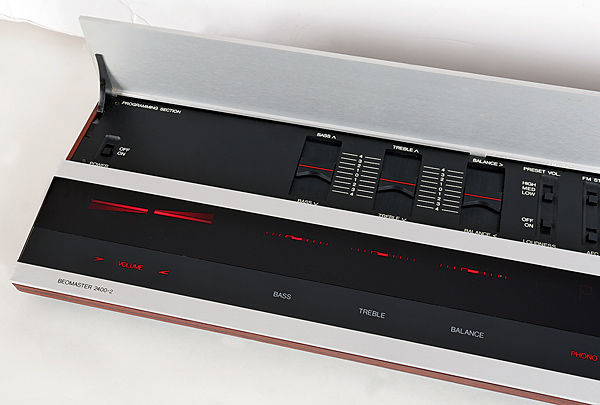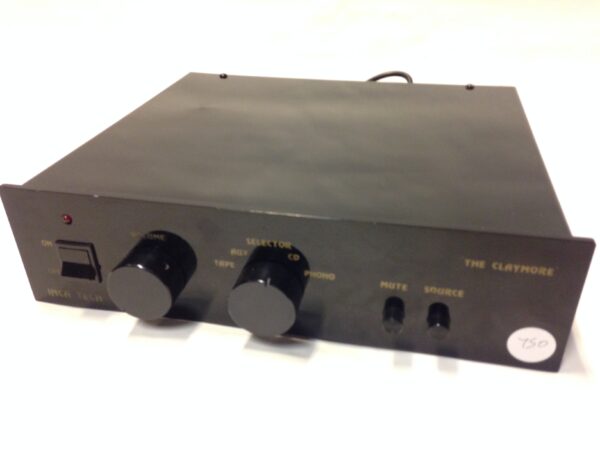Despite being the company’s best-selling and possibly most-loved legacy product, few audiophiles in the United Kingdom paid attention to the launch of the Audio Research SP9 in 1987. It was a powerful – and technically creative – preamplifier that appealed to a British audience that was enamored with other trends at the time. If we’re being honest, our hi-fi press didn’t help matters by disparaging American high-end hi-fi in the same way that the motoring press dismisses American vehicles. Both appeared to be unnecessarily huge and unwieldy, and frankly, not really appropriate for our smaller, more constricted locations…
The Audio Research SP9 was a complicated, no-expense-spared design that had been ‘shrunk in the wash’ to make it more inexpensive. When it was first released, it was still quite pricey, but you didn’t have to be Richard Gere to afford one. Here was a taste of one of the finest aspects of hi-fi living, brought within audiophiles’ reach. At a price that some could afford, it was a fantastic hybrid transistor/tube preamplifier with a wonderful built-in phono stage, full source switching, and tape monitoring. What was there not to enjoy about it?
The company’s preamp portfolio was substantial even in the late 1980s. “The SP8 and SP10 were superb preamps, but their all-tube architecture made it difficult to keep them quiet,” says David Gordon of Audio Research (input-gain-power supplies). It was difficult to get truly low noise tubes, and keeping them low noise after a few hundred hours was a gamble. They also needed to be maintained. Tube socketed noise could occur after a couple of years if they weren’t kept clean. As a result, the hybrid SP11 took the place of the all-tube SP10. It was the first Audio Research preamplifier to use FETs at the input, and since then, we’ve used (well selected) FETs at the input of every preamplifier, line-stage, and phono preamplifier. We chose extremely low-yield FETs since they sound great and are exceedingly quiet. The SP11 not only provided excellent performance, but it also maintained it for a long time and required almost minimal maintenance…”
The SP11 was a watershed event for the Minneapolis company, with well-healed audiophiles flocking to it. However, it was clearly pricey, so Audio Research opted to scale down the technology to a single-box chassis that was more inexpensive. The SP9 ($1,695 in its home market) was introduced in June 1987 and offered incredible value. The latter was the outcome of countless studies and was a simplified adaption of hybrid tube/transistor technology that originally emerged in the SP11 two years prior. ARC’s first preamplifiers were all-tube, but the company’s founder, William Z Johnson, sought less distortion, more linearity, and longer life. The outcome was magical, thanks to the employment of two 6DJ8 (6922) tubes in intermediary gain stages, one in the phono section and one in the high level stage. “The evaluations were overwhelmingly positive, and the SP9 (series) quickly became our best-selling product,” Gordon recalls.
The SP9 was incredibly well specified and represented the pinnacle in inexpensive luxury for many hi-fi aficionados, even if it didn’t appeal to a minimalist-obsessed UK hi-fi scene at the time. It was a stark contrast to the stunning looking, ultra-modern Jacob Jensen-designed Bang & Olufsen 8000 series coming out of Europe at the time! Weighing 6kg and measuring 480x134x260mm, it was effectively of standard rack mounting size and looked quite ‘classic’ even when new; it was a stark contrast to the stunning looking, ultra-modern Jacob Jensen-designed Bang & Olufsen 8000 series coming out of Europe at the time! It had dual tape inputs and outputs, full monitor switching, automatic muting for warmup, voltage drop, or interruption (plus switchable manual muting), and a fantastic moving magnet/moving coil phono stage. A insulated toroidal power transformer silently conducted its job inside the beautifully completed cabinet, precisely situated to minimize noise to a minimum.
The SP9’s genius was that it didn’t sound like a woolly old 1950s preamplifier, but it also didn’t sound like a harsh, analytical 1980s preamplifier. Instead, it danced a narrow line between the two, adding a lot of its own charm in the process. It wasn’t as mushy, soggy, or euphonic as tube haters might describe thermionic designs, but it didn’t grate or shout at you like other solid-state designs could. It’s no surprise that so many other manufacturers’ products followed in its footsteps, as this was a brilliantly calibrated compromise. The SP9 makes music enjoyable; it’s viscerally energetic and engaging, yet you’d never guess you’re listening to a tube or transistor product; it’s just excellent at what it does. It’s like a wonderful luxury car in that it doesn’t draw attention to the way it’s built – the clever engineering beneath the skin – instead allowing you to enjoy the ride.
Despite its huge success, the SP9 was quickly improved. Two years later, in June 1989, the Mark II version was released, with fourteen upgrades and sixty-one component and wire adjustments. The most obvious change was a 12dB gain reduction on the CD input. At the time, all preamps and integrated amplifiers from the “pre-CD era” failed to cope with the increased output of the new digital disc spinners. It was a wonderful adjustment, as it put a stop to the drastically different volume levels depending on which input was used. Low-level hum was also decreased by 10 to 20 decibels, and the phono stage was given some overload protection in case a CD player was unintentionally connected to it. The new SP9/II, according to the business, is more of a junior SP14 than an updated baby SP11. The SP15 eventually succeeded the SP11 MKII, and the SP14 was reborn as a baby SP15, followed by the SP9 MKII. It was a clearer performer, with better sound staging than its already excellent predecessor.
Over 7,000 SP9s had been sold by the time the SP9 MKIII was released, making it one of the most popular high-end items of its generation. The third generation design cost $2,495 or $1,295 for the I and $995 for the II, and contained several technical upgrades. The use of M.I.T. capacitors at important locations in the circuitry, more filter and bypass caps for the power supply, and a new input board with decreased point-to-point wiring and enhanced grounding were among these improvements. New gold-sleeved tube sockets were also installed for enhanced oxidation prevention, as well as improved voltage regulation. The tubes were replaced with new 6922 dual triode tubes. Finally, a thicker front panel and rack handles were chosen for good measure. “This was our final full-function preamplifier (with both phono and line sections) until 2001, when we produced the (entry level) SP16 and SP16L (line section only),” Gordon explains.
The good news is that the SP9 was a mature, high-end device developed by a business that had been making preamplifiers since 1970 with the SP1 and hence had a lot of expertise with them. The SP9 was a solid-state hybrid developed with minimal noise and great durability in mind, despite its early tube designs. The limited life of tubes was one of the arguments offered by solid-state aficionados in the 1980s for not running valve amplifiers, yet the SP9 could be used for up to 10,000 hours before needing replacement. Also, the valve type required wasn’t particularly obscure; for the optimum sound, Audio Research Corporation advocated using its own branded varieties. In use, the SP9 stays cold and doesn’t put too much strain on its small glass bottles. It’s a fantastic long-term investment opportunity.
The SP9 is a fantastic do-it-all preamplifier that’s beautifully crafted, easy to use and own, and just about reasonable. Audio Research Corporation has created a great many pre and power amplifiers over the years, but the SP9 stands out as a great do-it-all preamplifier that’s just about affordable. It was one of those fortunate coincidences of fate when the stars aligned to create a fantastic sounding ‘real world’ high-end design that some of us can still dream to buy. Indeed, it’s currently a fantastic secondhand value, and a fantastic first step into ARC ownership that might lead to a long-term love affair. In the United Kingdom, ‘previously owned’ models start at roughly £750, and the price is determined by condition and provenance rather than the version. Purists will go out of their way to find a mint Mark I, but for everyday usage, the SP9/III is the way to go, with the best sound and finesse, and it’s not necessarily more expensive to acquire. Fortunately, the business still supports the SP9, though it no longer upgrades older devices to Mark III specs. You’ll never turn back if you find a good, well-cared-for example!







